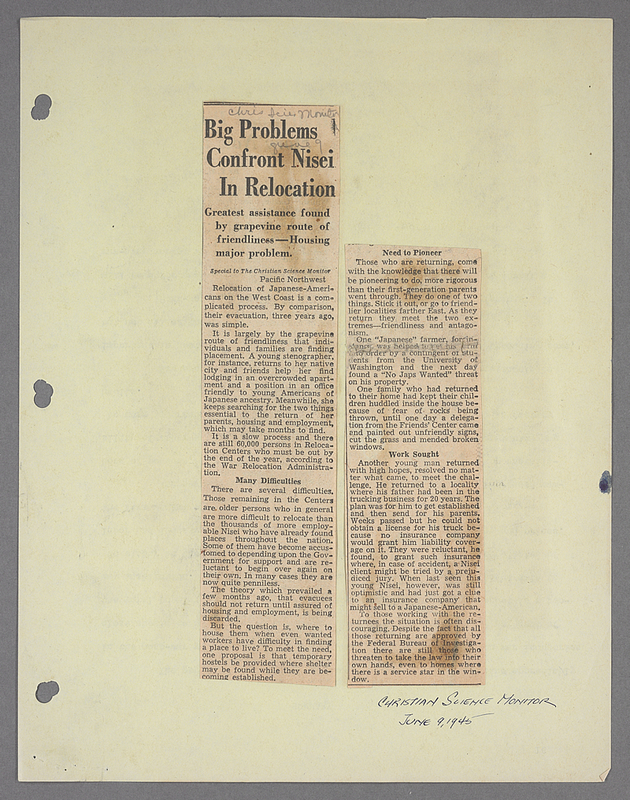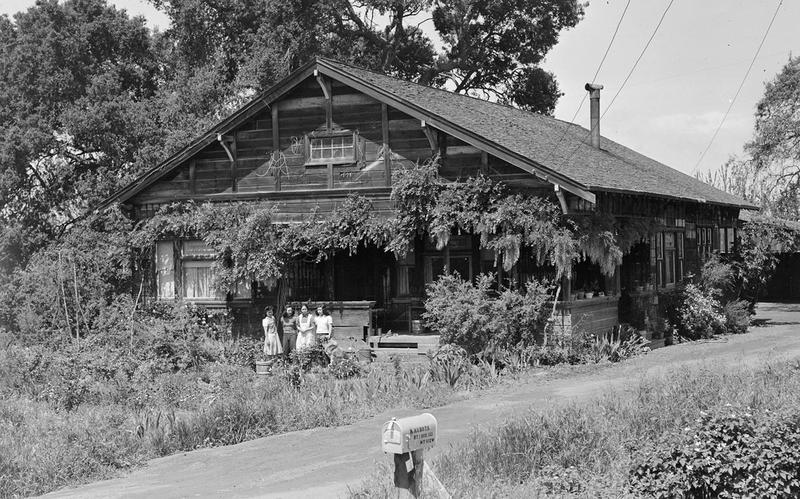Resettling in the Delta Region
Resettling was going to be difficult for some Japanese-internees because they did not know what to expect when they came back to California. With minimal financial resources when they left the camps, the transition from camp life to normality in the Delta region was difficult for most of them. For instance, Stockton native Mary Imani had difficulty finding a home when she and her family came back to Stockton after camp life in Gila, Arizona. Even though Mary finished her education from Stockton High and “did not have any trouble getting back into the school routine”[1], her and her family had to live “in the basement of a church with a few other families.”[2]. To help ease the housing shortage, it was common for local churches in the Delta Region to open its doors to single young people or families. For example, the Buddhist church in San Jose and San Francisco,housed former Japanese-internees.
Unlike Mary Imani, Joan Nakashima and her family, from Loomis California (part of the Sacramento area), did not return to California after camp life. Her father moved to Nebraska to find work. Despite the difference in location, the line of work resembles the work that persist in the Delta - agricultural labor. Agriculture is the essence of the Delta region, and it is a part of the local culture and history. Her father worked in a small farm for a farm rancher. In addition, “the farmer rancher wanted to bring in many more evacuees to this small town to work at his ranch.”[3] Knowing that the majority of evacuees were from the Delta region and worked in agricluture, it made them suitable for the rancher’s farm. Even though they did not go back to the Delta region, the father continued the line of work that thrived the Delta's economy.
Furthermore, a vast majority did resettle quit easily throughout the Delta region. Japanese-Americans who owned land and farms were able to reclaim their property, even though some of the property was in poor condition or vandalized. Since a majority of Japanese-Americans were farmers, they organized with white caretakers before they evacualted to take care of their land. This was consistent throughout the agriclutral section of Livingston, Cortez, and Cressy California. Even the owner of the California Flower Market of San Francisco contacted a white organization to mantain the market. Therefore, some farms and land were returned at a functioning state to its rightful owner.
[1] Ozzie and Mary Imani, sheet, 3.
[2] Ibid., sheet, 4.
[3] Joan Nakashima, sheet, 4.
Created by Collin Craig, Mario Tosqui, Oscar Lopez, and Devin Ramstead

